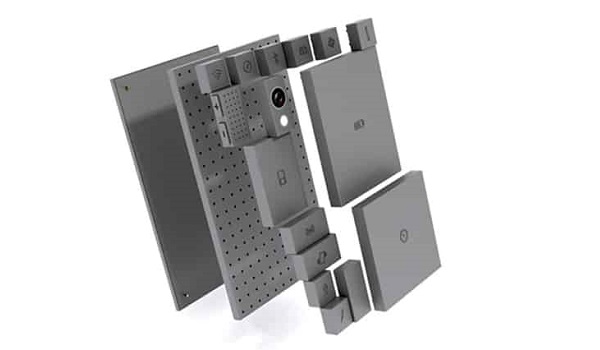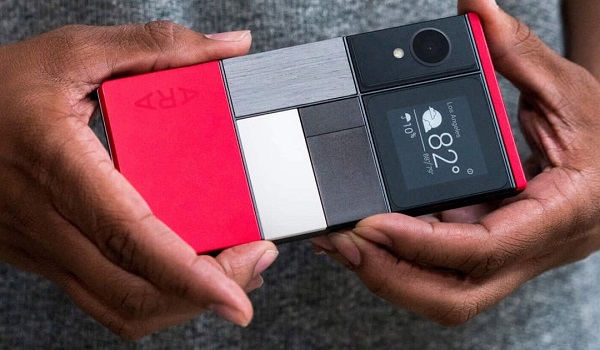A while back, I shared thoughts about my ideal smartphone with you guys. By cannibalizing (in my head, of course) some of the best hardware and software features from various devices in the market, I was able to dream up my very own Impossidroid Z13. It so happens that I’m not alone in my thinking. Someone has come up with a very interesting idea called Phonebloks.
Phonebloks: Yet another “ideal” smartphone?
More often than not, when we decide to replace our primary smartphone (aka daily driver), it’s usually because of one particular part/feature that’s gone bad or no longer meets our requirements – RAM, camera, non-upgradeable OS version… stuff like that. We end up having to get a replacement just because of one or two deficiencies on the older one. Meanwhile, the rest of the older phone is perfectly fine, but we’re forced to throw it away, maybe give it out to someone who will eventually also throw it away. That’s a lot of waste in the long run. Enter Phonebloks….
Phonebloks are made up of Lego-esque detachable blocks that are all connected to a central base.

Each block is a replaceable hardware piece that works together with other pieces to make up the phone. And every block has a pin with which it attaches to the base, through which electrical signals are relayed to the phone screen.
No more electronic waste?
An immediately recognizable advantage of such a brilliant setup is that whenever any part goes bad, or needs to be upgraded, you don’t have to replace the whole phone, just the block that needs upgrading/replacement. Say your phone’s 512 MB RAM no longer meets your daily requirements; you decide you now require 2 GB of RAM. All you need to do is pop out the old RAM, like you would a Lego piece, get the higher RAM block and pop it back into the setup, like nothing happened. It’s that easy.
Did someone just ask what happens to the now obsolete, older RAM block? Erm….. thrown away maybe? Don’t look at me, ask Dave Hakkens. Here is a video of how Phonebloks works:
Phonebloks Lets you customize your phone to your taste
In my ideal smartphone article, I mentioned how phone manufacturers only give us what they think we want, not what we really want. With Phonebloks, this would (hopefully) never be an issue. Checkout these 3 scenarios I adapted from Dave Hakkens’ proposal.
User Ayo:
Does everything over the cloud. So he requires a better battery life to support all that syncing. But he also requires far less physical memory (or none at all) since everything is done over the internet cloud. So he goes from A to B. Bigger battery, no more physical memory, same phone; no phone replacement required.
User Bello
Is a hiker and photo junkie; cameras and basic connectivity are all he cares about. Again, he didn’t have to change his phone just to get a new camera
User Chi Chi
Doesn’t care about all these secondary features. She just wants to listen to her Wizkid and Davido music 24/7. So she maxes out the speakers and gets rid of all that cluster.

Great idea but….
I think this Phonebloks concept is brilliant, but I have a few reservations. If something like this ever works out, I believe prices of phones will drop drastically. Manufacturers can choose to concentrate on niche products; specific blocks, for example, just camera blocks. This could mean less expenses on research, development and mass production. But this might not work out well in the long run.
Just as phone makers already hold back on key features in the hope of securing sales for future releases (think the relatively minor incremental differences between the Samsung Galaxy S1 through S4), I can imagine block makers would probably do the same. The power might be taken away from the consumer yet again.
I also pointed out the possibility of unused blocks being thrown away. This could potentially lead up to even more waste, considering the ease with which unwanted parts can be upgraded. I imagine compulsive upgraders would generate quite a lot of waste.
Finally, it might look like many steps forwards, but it’s also a few steps back. With all the blocks and extra layers, we’re looking at the possibility of thicker phones. Phones are supposed to be getting thinner, not thicker. But I also imagine that as the technology improves, the blocks might get thinner too. Besides, it might not be such a bad idea having to trade in thinness for ultimate customizability, for starters. Asides these reservations, I think I’m all in for the idea.

Your (non-financial) support needed
Remember that Phonebloks for now is only a concept. In order to get this idea to materialize into reality, the stakeholders have to be involved; phone makers, researchers, developers et al.. But they won’t get involved if there isn’t enough public interest. That’s where you, and every other average smartphone user, come in.
Remember that Ubuntu Edge crowdfunding fiasco? This one is nothing like that. There will be no financial commitment required, as David Hakkens has chosen to employ crowdspeaking instead. The idea is to get people to sacrifice an auto social media update or two, on their platform of choice, towards generating the much-needed publicity. If they meet their target and enough people pledge their support, on the 29th of October, crowdspeaking platform, Thunderclap, will send out millions of simultaneous social media updates from these pledged accounts, using the hashtag #phonebloks. Hopefully, this will get the attention of the right people.
If you think you like the Phonebloks concept, you can pledge your support over at the Phonebloks Thunderclap page. You can also find out more about Phonebloks on the Phonebloks official website.
- Don’t miss our reviews.
- Follow our news on Google News.
- Join our WhatsApp Group, to be notified of the most important articles and deals,
- Follow us on Instagram, Facebook, Twitter, and YouTube.